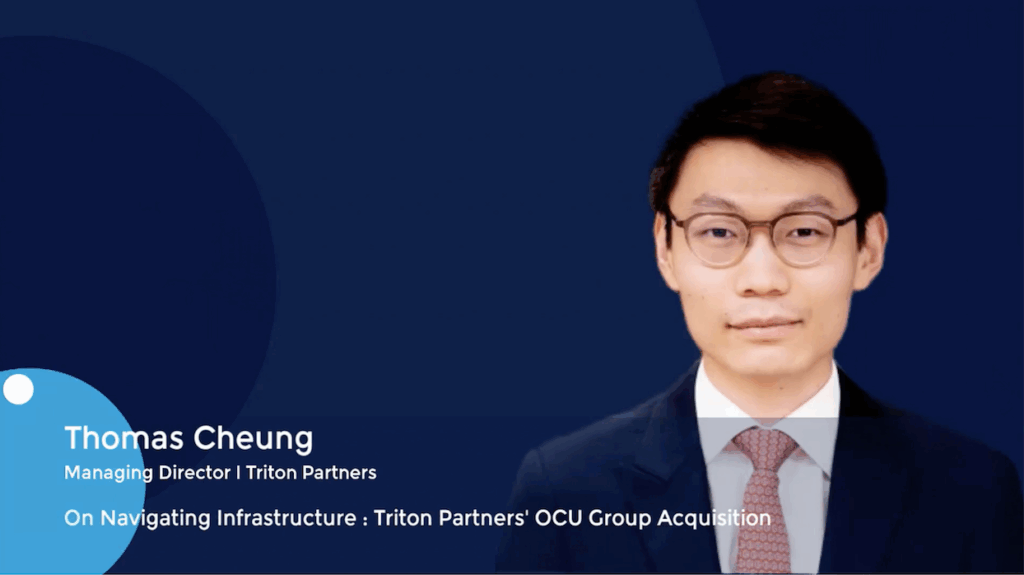Asia buyout: Will more global GPs follow EQT and TPG into the middle market?
- EQT has indicated it will raise USD 1.4bn, TPG is targeting USD 1bn
- They want to act on opportunities that are now too small for flagship funds
- Focus of companion funds has shifted from China growth to ex-China and control
TPG has joined EQT Private Capital Asia in launching a regional mid-market private equity fund to accompany its flagship buyout strategy, with industry participants comparing the development to earlier strategic evolutions in North America and Europe.
The new TPG fund will primarily invest in Australia, with smaller allocations for Southeast Asia and South Korea, according to four sources familiar with the situation. Two sources put the target size at around USD 1bn; the other two said it would be similar in size to EQT’s offering. TPG declined to comment.
EQT launched its mid-cap fund in late 2022, seeking USD 750m, and a first close of USD 400m came in March 2023, coinciding with the debut investment in Malaysia-headquartered Viewpoint Software. The hard cap was set at USD 1bn, but the most recent guidance seen by two LPs indicated a final close at a revised hard cap of USD 1.4bn. EQT declined to comment on fundraising.
“We always thought about it as USD 1bn and we didn’t push them to set a hard cap – in part because we didn’t want them to invest it within two years and then come back to market when the next flagship fund will be in the market,” said one of the LPs.
The investor added that other managers may follow suit, but it would be difficult for those already having difficulty with flagship fundraises. “Their sole focus has to be raising the main fund and making sure it’s a reasonable size and scale,” the LP said.
EQT started marketing its mid-market fund a few months after closing its eighth flagship vehicle on USD 11.2bn. TPG is expected to close its eighth pan-regional fund – currently in the market with a target of USD 6bn – around the end of April with upwards of USD 5bn in commitments.
The introduction of mid-market funds is partly a consequence of flagship vehicles becoming larger in recent vintages, which has left GPs unable to pursue attractive smaller deals, said Yar-Ping Soo, a partner at Adams Street Partners. At the same time, if a flagship fund comes in smaller than expected this time around, the GP might be under pressure to keep up assets under management (AUM).
“If you raise USD 5bn-USD 7bn, there is still a USD 1bn-USD 3bn space where you can play with the same team,” said Soo. “If you want to know what’s going to happen in Asia, it sometimes helps to look at the US. There have been plenty of franchise extensions in that market.”
Global blueprints
According to Nicholas Macksey, a partner and head of EQT’s mid-market growth advisory team in Asia, investing in the mid-market space is a natural extension of the firm’s large-cap activity. The investment team already tracks the mid-market segment to identify attractive companies before they achieve greater scale, stay ahead of emerging trends and technologies, and look for bolt-on opportunities for larger portfolio companies.
“Asia’s mid-market space is large and growing, but relatively underserved. Global players have come into Asia and are trying to compete in the large-cap space, but there are very few pan-Asian mid-market buyout strategies,” he added.
“One barrier is that it can be expensive to dedicate local expertise and resources in every market to truly cover the pan-Asian region. For global firms with an established presence in Asia, it’s relatively simple to have a mid-market strategy that is an extension of the existing platform.
Moreover, following the merger of EQT and Baring Private Equity Asia (BPEA) in 2022, it was suggested that strategies EQT pursues in Europe and North America would be rolled out in Asia. Earlier that year, EQT closed its first growth fund, which invests in enterprise software and tech-enabled consumer, healthcare, and climate businesses, on EUR 2.4bn (USD 2.5bn).
Just within private capital, EQT also has strategies focused on venture, sustainability and impact, life sciences, and bringing private markets expertise to public markets. This strategic proliferation is typical of global private equity firms, whether it involves middle-market buyout and long-hold investments or thematic expansions in technology, healthcare, and financial services.
Large-cap global and Asia-based pan-regional managers have become prolific fundraisers over the past 15 years. Looking at the activities of a subset of 11 of the largest GPs, each of which now has a pan-regional buyout mandate of some form, there were 10 funds in the 2006-2010 vintages with an average size of USD 2.6bn. It rose to 15 funds and USD 3.9bn for 2011-2016 and 16 funds and USD 7.1bn for 2017-2022, according to AVCJ Research.
BPEA crossed the USD 1bn threshold for the first time in 2007, raising USD 1.51bn for its fourth fund. Its latest vintage is more than 7x larger. KKR’s debut offering of USD 4bn in 2006 was the largest pan-Asian fund ever raised. The firm still holds the record, having secured USD 15bn for Fund IV. Bain Capital closed its first Asia fund on USD 2.3bn in 2011. Last year, Fund IV hit USD 7.2bn.
Even TPG and CVC Capital Partners, which saw a step down in size after the global financial crisis, are now – or soon will be – about 50% above the pre-crisis level.
That said, the notion of companion funds is hardly new. The Carlyle Group launched its first flagship Asian fund in 1999 and is currently in the market with its sixth. The firm has also raised six pan-regional growth funds, four Japan funds, and two China-focused renminbi-denominated funds.
EQT’s first foray into Asia was in 2000 through Investor Capital Partners Asia Fund, a USD 322m mid-market fund. Fund II (2006 vintage, USD 535m) was China only and Fund III (2015, USD 800m) was pan-regional mid-market. The BPEA deal was essentially a shortcut to an Asia large-cap strategy.
Follow the money
Within this activity, there have been discernible shifts in emphasis. In 2010, standalone China funds capable of addressing smaller opportunities became popular. That year, KKR raised a USD 1bn China fund while The Blackstone Group, Carlyle, and TPG launched renminbi-denominated vehicles in what turned out to be a doomed attempt to minimise the impact of foreign investment restrictions.
China was still top of mind when PAG raised growth funds of USD 350m and USD 525m in 2017 and 2021 and Hillhouse Investment split its 2020 vintage into separate growth and buyout pools with targets of USD 2.6bn and USD 9.5bn. This was before investor sentiment soured on China, amid regulatory and exit uncertainties, and then soured on growth-stage technology globally.
Recent Asia mid-market offerings are characterised by a desire to do less China and more control. Carlyle’s Asia buyout team assumed responsibility for the growth strategy several years ago, which led to a reset of the fund series (Fund V became Fund I), according to a source close to the situation. Deals have focused on more mature businesses, with India and India cross-border a sweet spot.
Enterprise software makes up most of the announced deal flow for EQT’s mid-market fund, where equity commitments start at USD 50m. Viewpoint Software has been followed by the likes of Japan’s HRBrain and India’s Indium Software – all three are control transactions. Macksey noted that India, Southeast Asia, Japan, and Australia are the priority geographies for the mid-cap strategy.
“These are regions where we see more opportunities for controlling stakes in higher growth businesses,” he said. “We also use the same, proven value-creation approach and thematic investment strategy, with the priority sectors being technology, services, healthcare, and tech services.”
Joel Thickins, Asia co-managing partner at TPG, referenced the core target markets for the new growth fund at the recent AVCJ Private Equity Forum Australia & New Zealand. Southeast Asia is benefiting from a decoupling of supply chains from China, while Australia and South Korea are attractive because they deliver Asian growth with developed market exposure.
TPG’s portfolio includes mid-cap investments that have since evolved into large-cap plays. For example, Australian clinical trials specialist Novotech was purchased in 2017 at a valuation of AUD 300m (USD 199m). Following several bolt-on acquisitions that facilitated further Asian expansion – notably in China – the company secured new equity and debt funding in 2022 at a post-deal valuation of approximately USD 3bn.
Strategic expansion is not limited to private equity. Indeed, KKR’s Asia-based AUM rose from USD 21bn to USD 65bn during the four years ended 2023 but the private equity share fell from almost 90% to 51%. This was largely because of the firm’s efforts to build out infrastructure and credit businesses.
Bain & Company’s latest Asia Pacific private equity report highlighted the growth potential of infrastructure and credit in the region. It also observed that expanding into new asset classes is seldom straightforward, citing analysis that found more than 60% of firms that do it end up retreating from at least one of those areas over time.
Elsa Sit, a vice president and a member of Bain & Company’s Asia private equity practice, warned against trying to become too diversified too quickly. Sometimes it is better to stick to core adjacencies or concentrate on improving existing strategies – and in this sense, extending down into the middle market constitutes a logical course of action.
“They see so many opportunities that their buyout funds cannot capture,” Sit added. “While the middle market is competitive, they have global experience and track records, which means they have an advantage over some existing players.”













